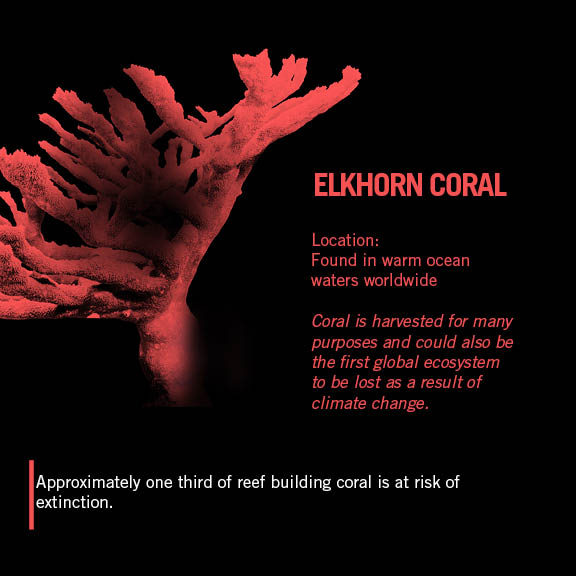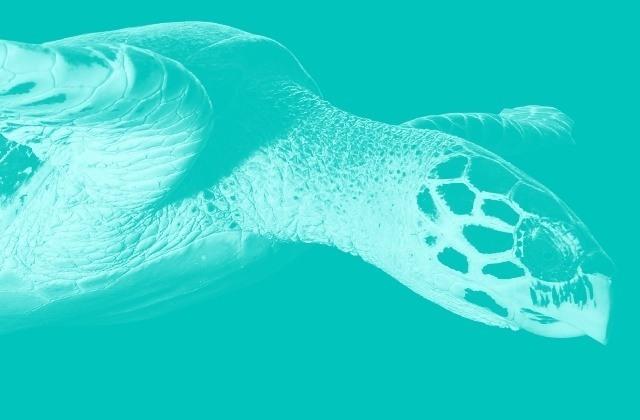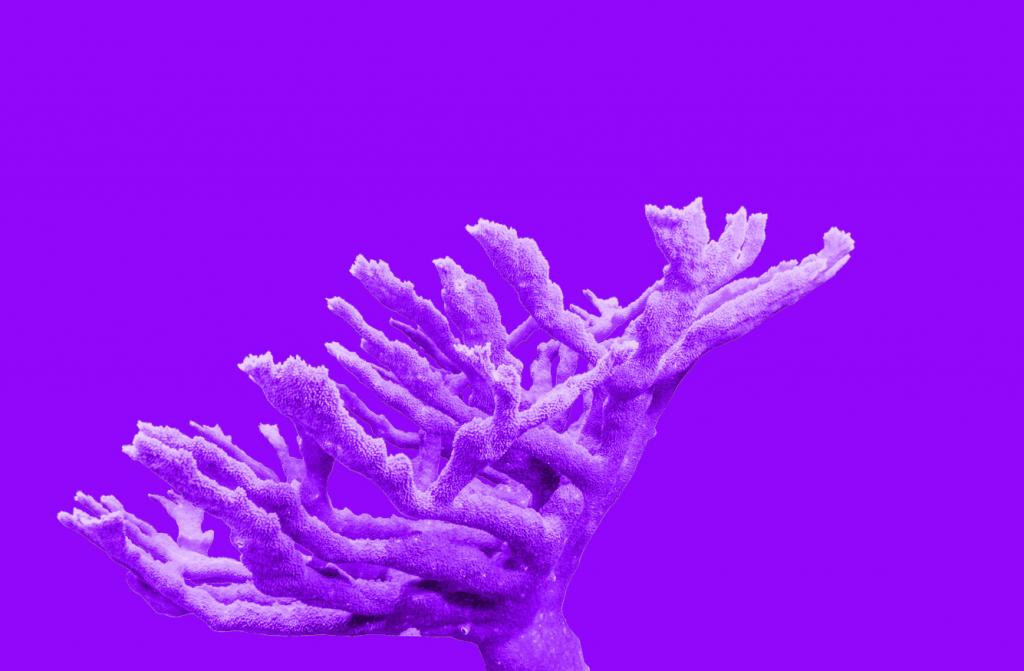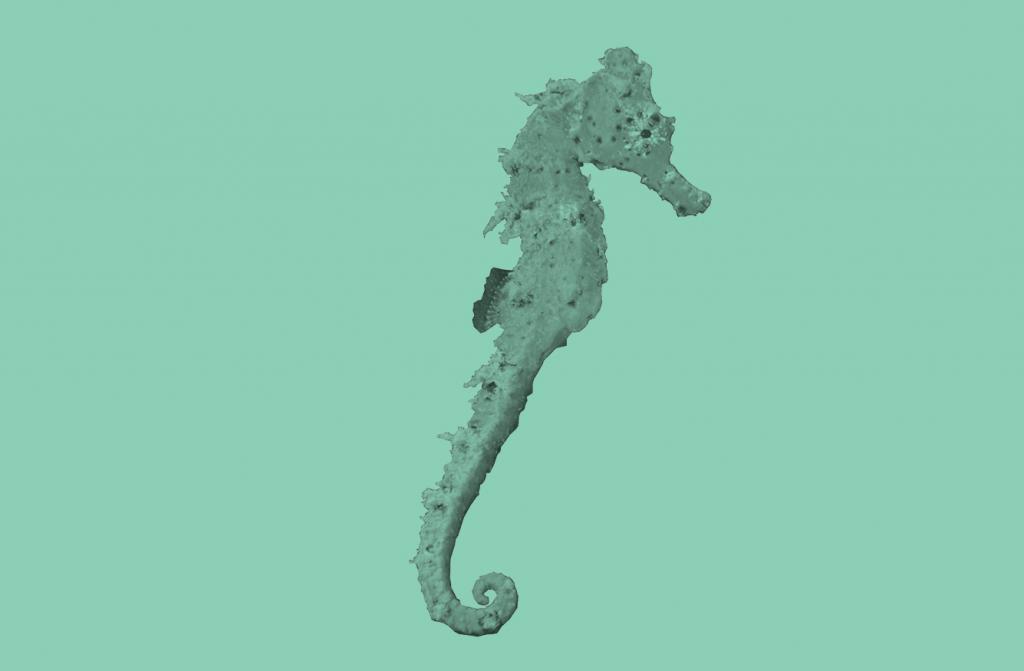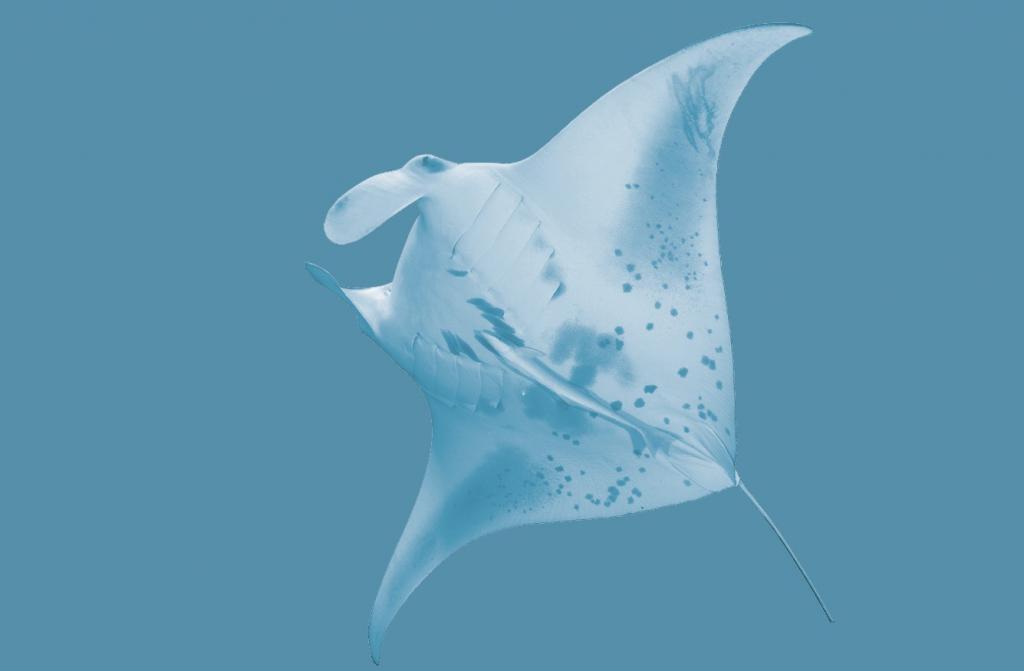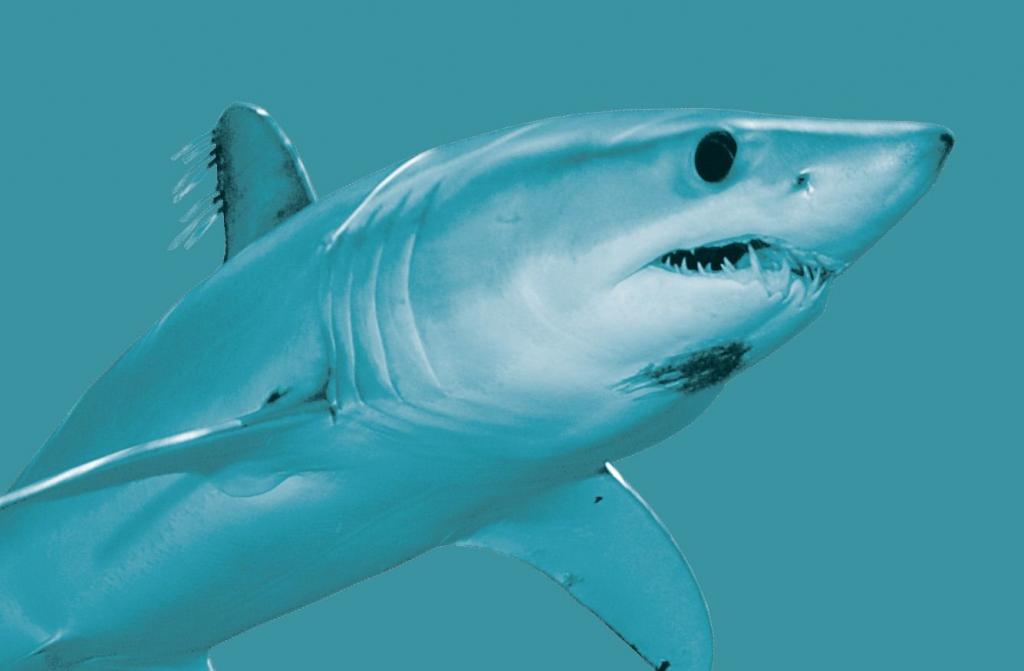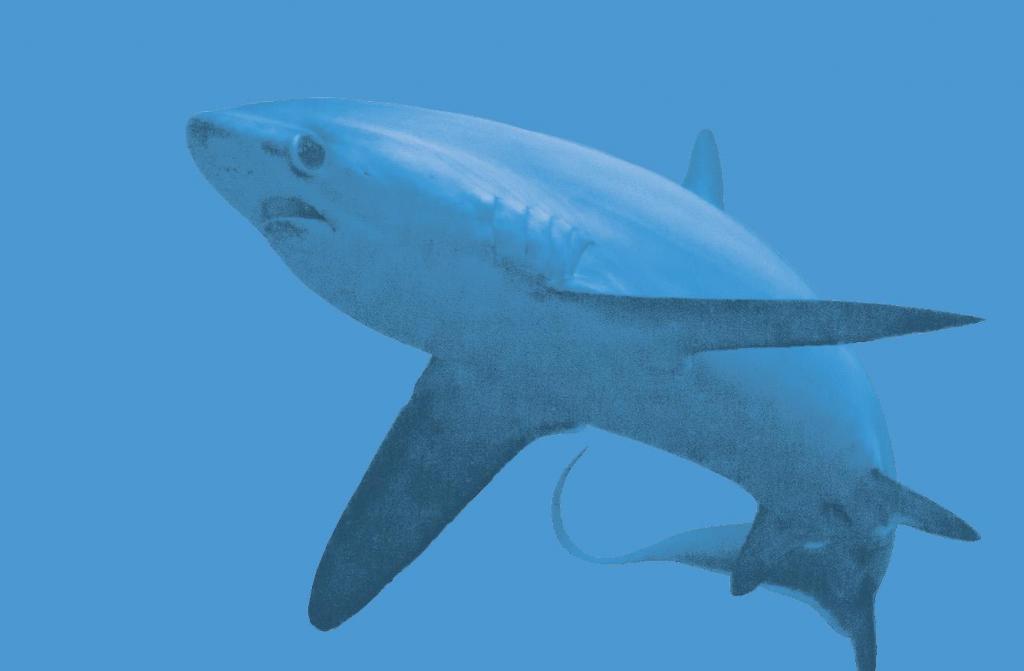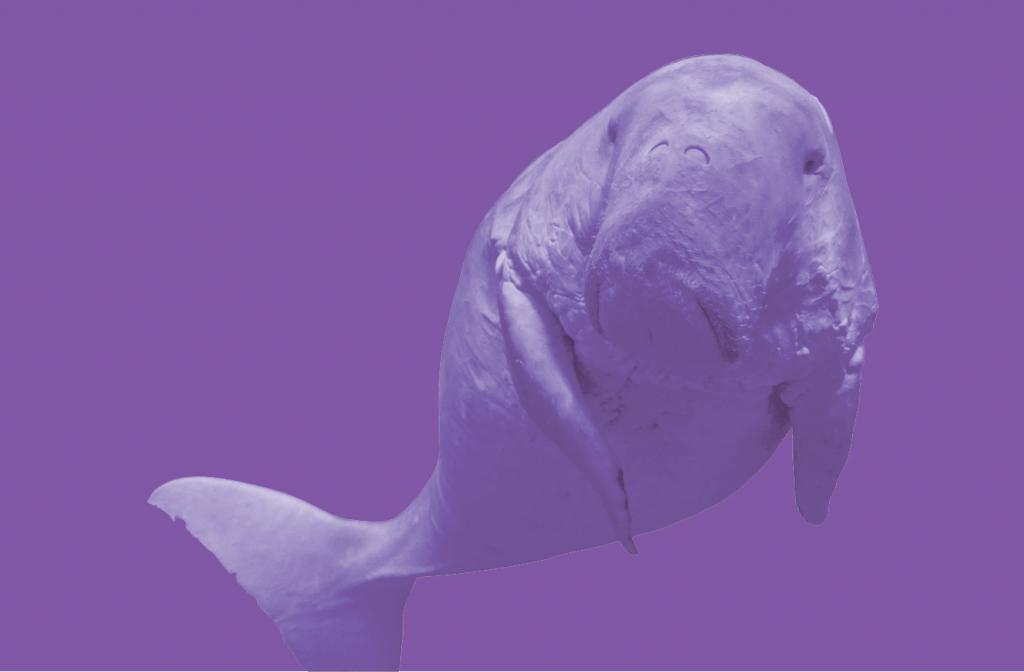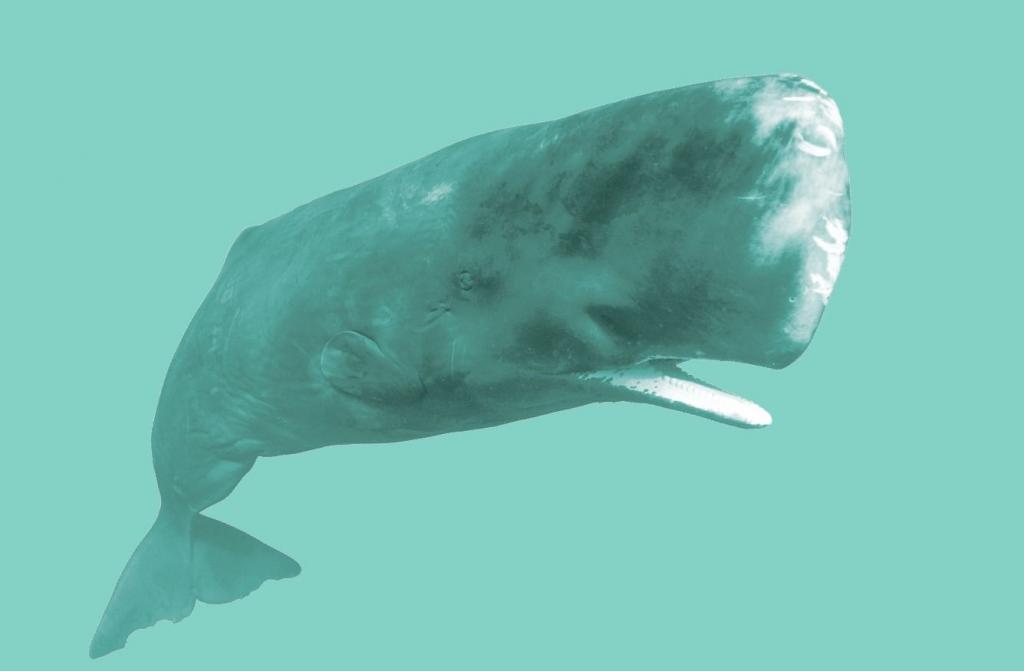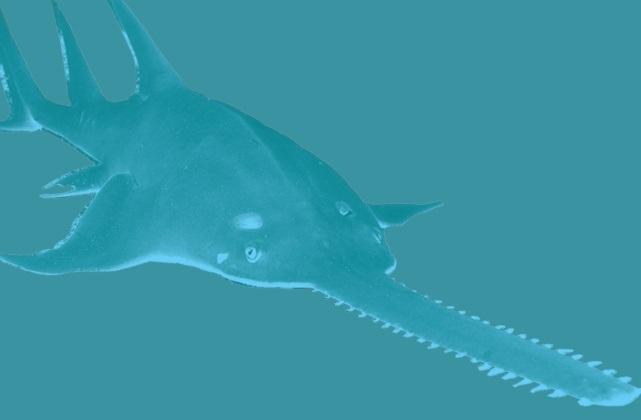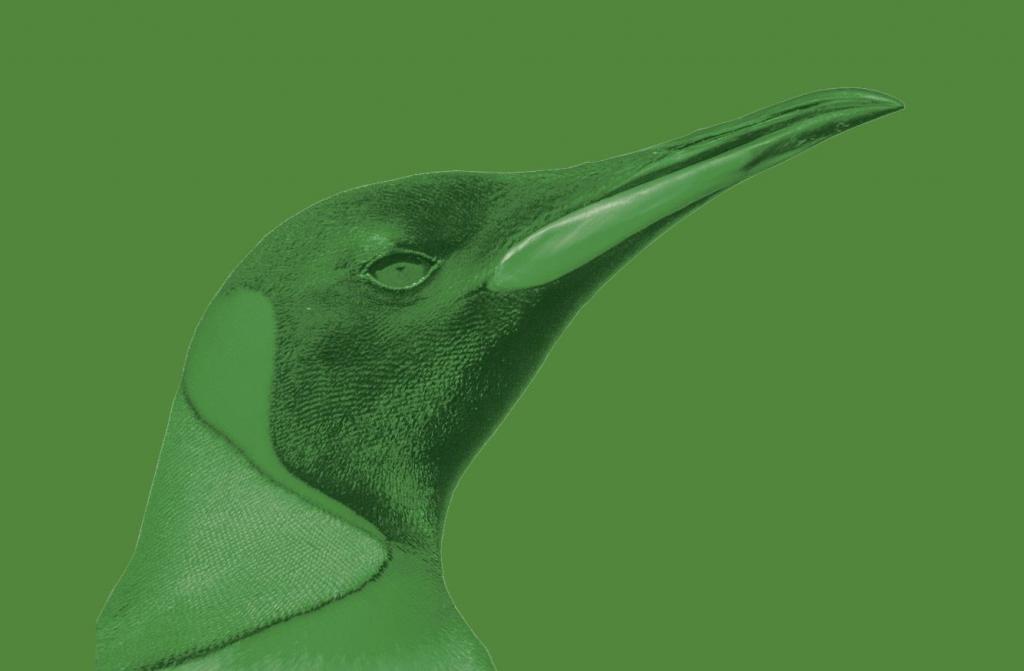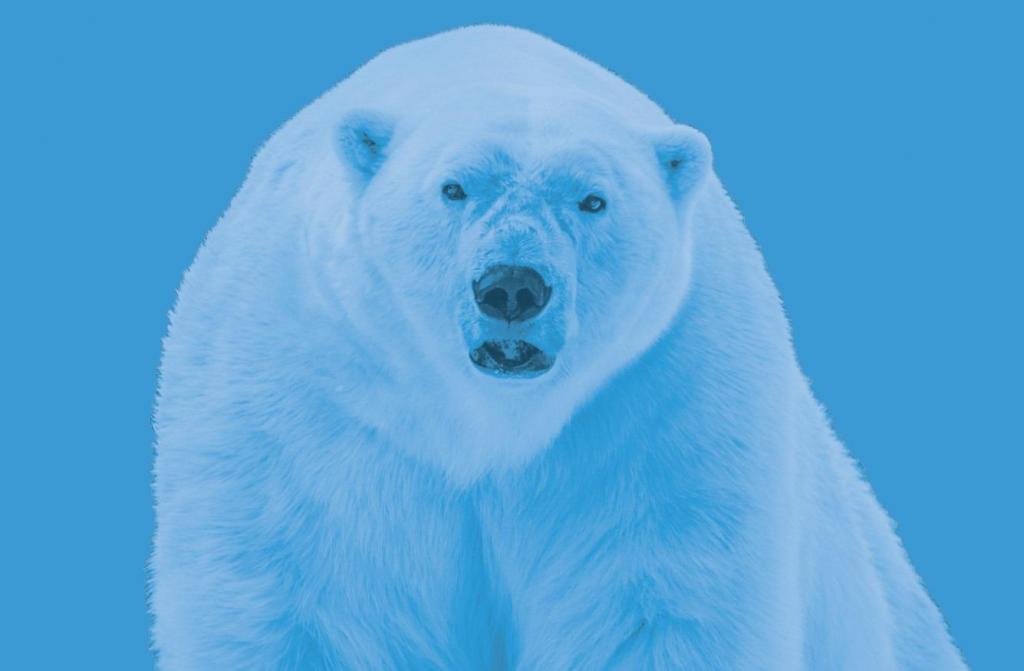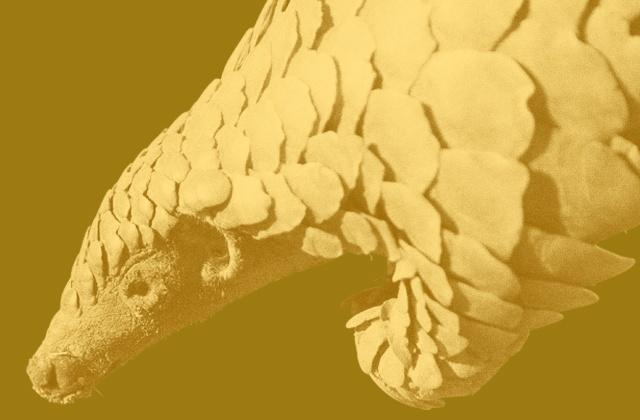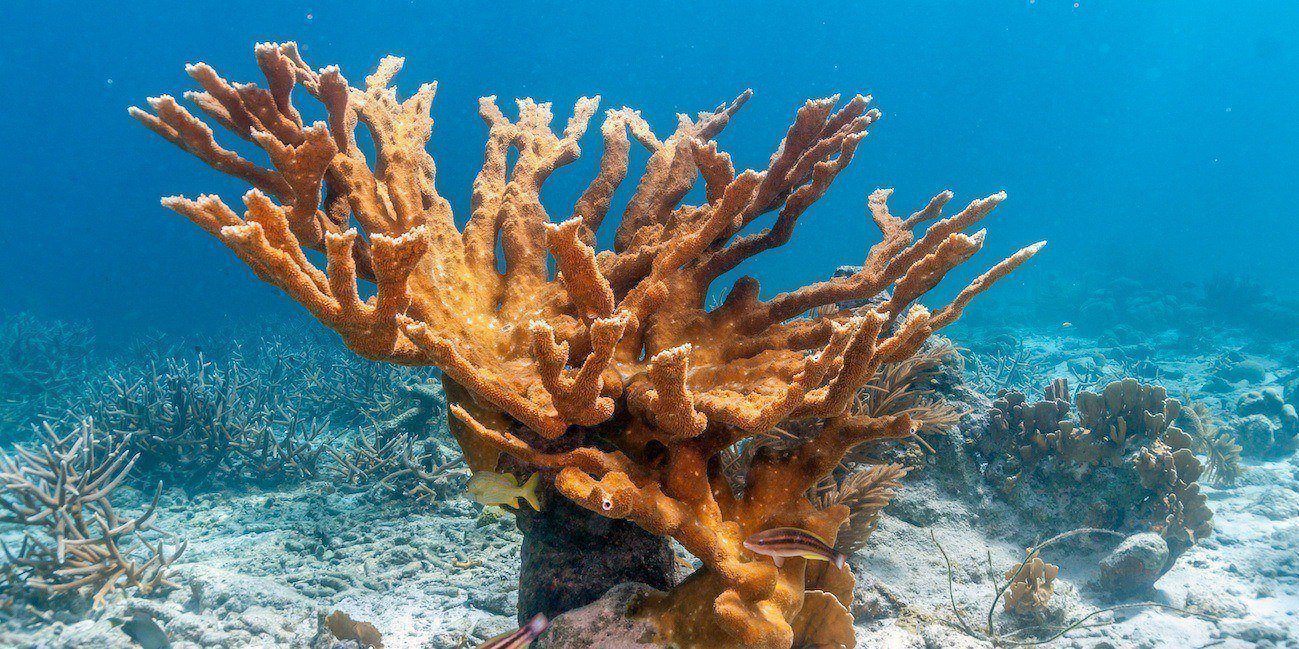
Elkhorn and Staghorn Coral
Corals form remarkably diverse communities called coral reefs, which provide the reef complexity and habitat for many fish species, and thus help productivity of reef ecosystems. The corals’ striking colours come from a symbiotic relationship with a type of algae. Elkhorn and Staghorn are some of the fastest-growing corals and are excellent reef-builders, meaning that their decline threatens many other species. Coral reefs are at high risk of being the first global ecosystem to be lost due to climate change.
WHERE THEY ARE FOUND
Both species are found in the Caribbean Sea and the Gulf of Mexico. In general, branching corals (to which Elkhorn and Staghorn belong), are found in all coral reef areas.
WHY THEY ARE IMPORTANT
Coral reefs are important ocean habitats and are home to around a quarter of all marine species, making them one of the most biodiverse habitats in the world. They act as nurseries to many fish species by helping provide shelter from predators, giving fish a chance to grow. Coral reefs also have many economic benefits, such as tourism, habitat for commercial fisheries, coastal protection, and preservation of marine ecosystems. They can also help mitigate the negative effects of climate change, protecting coastlines from extreme weather events. Furthermore, there are complex chemicals found in coral reefs that hold promises to modern medicine.
HOW THEY ARE THREATENED
Staghorn and Elkhorn coral are harvested for building materials, souvenirs, jewelery, and for aquariums. The number one threat for coral reefs globally is climate change. Pollution, climate change and other stressors cause the algae to be expelled from the coral’s tissues, which makes them lose their major source of food and their colour – a process called coral bleaching. If the ocean temperature stays high for a prolonged period of time, this leads to the death of the coral. Elkhorn and Staghorn corals are also particularly prone to coral disease, often associated with degraded water quality. Without urgent intervention, the world is on track to lose up to 90 per cent of its coral reefs within the next 30 years.
CITES Listing: Staghorn and Elkhorn corals are listed on Appendix II and, therefore, trade in these corals is carefully regulated, and a permit is required to bring these corals, or objects made from them, into the countries that have signed the CITES convention.
HOW YOU CAN HELP
Avoid buying any products made from coral. You can also make general lifestyle choices that lead to a low carbon footprint to mitigate climate change and coral bleaching. Reduce your seafood consumption and make sure that the seafood you buy is sustainably sourced, follow fishing regulations when fishing, and support marine protected areas in key conservation sites. Finally, make sure you choose ethical tourism companies, and advocate for climate action.
Learn about Indonesian singer-songwriter Raisa Andriana's connection to coral here!
The percentage of Staghorn coral population decline in the last 30 years

